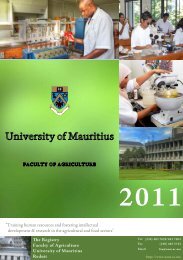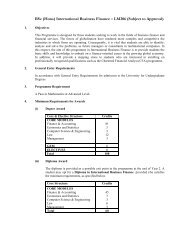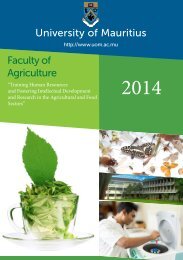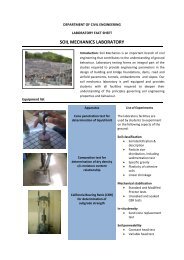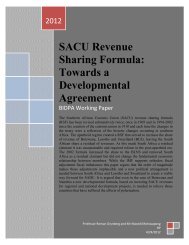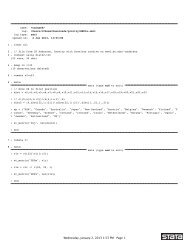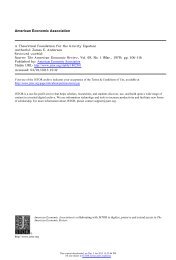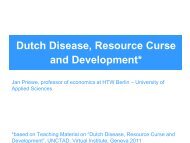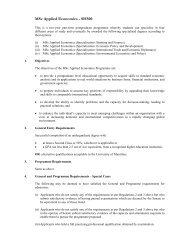Capital Formation and Economic Growth in Mauritius
Capital Formation and Economic Growth in Mauritius
Capital Formation and Economic Growth in Mauritius
You also want an ePaper? Increase the reach of your titles
YUMPU automatically turns print PDFs into web optimized ePapers that Google loves.
<strong>Capital</strong> <strong>Formation</strong> <strong>and</strong> <strong>Economic</strong> <strong>Growth</strong> <strong>in</strong> <strong>Mauritius</strong>: Does FDI matter?ICITI 2012 ISSN: 16941225Impact of trade openness is significant <strong>and</strong> positive on overall capital formation. In particular,the impact of openness is highest on FDI. For <strong>in</strong>stance, the long-run coefficient is 4.4586 for FDIcompared to 1.3084 <strong>and</strong> 1.7590 for private <strong>and</strong> public <strong>in</strong>vestment. This certa<strong>in</strong>ly imply that tradeopenness considerably improves FDI attractiveness. F<strong>in</strong>ally, a negative but <strong>in</strong>significant impactof tax is detected on FDI. In addition, the coefficient is small at -0.23056 prov<strong>in</strong>g that FDI is tax<strong>in</strong>elastic,which is <strong>in</strong> l<strong>in</strong>e with the tax literature.After estimat<strong>in</strong>g the different models, we <strong>in</strong>vestigate the stability of the long- <strong>and</strong> short-runrelationships for each model. To <strong>in</strong>fer about stability of parameters Brown et al. (1975) proposedthe cumulative sum (cusum) <strong>and</strong> cumulative sum of squares (cusumsq) tests. The cusum (<strong>and</strong>cusumsq) compares the cumulative sum of residuals (<strong>and</strong> squares of the residuals) over timewith<strong>in</strong> a set of confidence <strong>in</strong>tervals, <strong>and</strong> if the sum of residuals moves outside the <strong>in</strong>tervals at aparticular po<strong>in</strong>t the model is said to be unstable. 15 The ma<strong>in</strong> advantage with the test is that it usesthe cumulative sum of recursive residuals based on the first n observations, which is updatedrecursively <strong>and</strong> plotted aga<strong>in</strong>st break po<strong>in</strong>t. The figures reported at Annex 2 gives theCUSUMSQ plots for each model. The results confirm that parameters of each model are robust<strong>and</strong> do not suffer from structural <strong>in</strong>stability. 162.7 ConclusionIn contrast to the weak <strong>in</strong>fluence of private <strong>in</strong>vestment, we reta<strong>in</strong>ed the significant impact offoreign <strong>in</strong>vestment on long-run economic growth, thus, confirm<strong>in</strong>g the prospects that FDI holdsfor <strong>Mauritius</strong>. And, highlight the long-way to be paved to reach the S<strong>in</strong>gapore‟s model, whereFDI is around 20% of GDP compared to 5% for <strong>Mauritius</strong>. Also, though <strong>in</strong>significant, the15 For example, if the plot of the CUSUM <strong>and</strong> CUSUMSQ stays with<strong>in</strong> the 5 per cent critical bound the nullhypothesis that all coefficients are stable cannot be rejected. If however, either of the parallel l<strong>in</strong>es are crossed thenthe null hypothesis (of parameter stability) is rejected at the 5 per cent significance level.16 Note, for the cusum <strong>and</strong> cusumsq plots at annex 3, the results can be <strong>in</strong>terpreted as marg<strong>in</strong>ally significant s<strong>in</strong>ce theplot lies, more or less, on the 5% bounds.27




